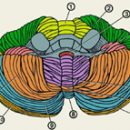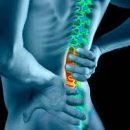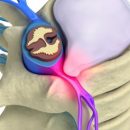Who is dangerous lateral amyotrophic sclerosis? How this disease flows? The author of this article knows the answers to these questions.
Content
Lateral amyotrophic sclerosis: prevalence and risk factors
 Lateral amiotrophic sclerosis (also known as motor neuron disease, Charcot's disease, in English-speaking countries - Lu Gerigi disease) - Slowly progressive, incurable degenerative disease of the nervous system by unknown so far etiology.
Lateral amiotrophic sclerosis (also known as motor neuron disease, Charcot's disease, in English-speaking countries - Lu Gerigi disease) - Slowly progressive, incurable degenerative disease of the nervous system by unknown so far etiology.
The disease is characterized by a progressive lesion of motor neurons, accompanied by paralysis (parisom) limbs and muscle atrophy. At the end of the way, patients die from refusal of respiratory muscles. Side Amiotrophic sclerosis should be distinguished from the so-called bass syndrome, which may accompany such diseases like tick-borne encephalitis.
Lateral amyotrophic sclerosis first described in 1869 Jean-Martin Charcot.
The causes of the development of lateral amiotrophic sclerosis today are not defined.
The absolute majority of cases are not related to heredity and cannot be positively explained by any external factors (transferred diseases, injuries, ecology, etc. NS.).
Every year, 1-2 people out of 100,000 are fragile lateral amyotrophic sclerosis. As a rule, the disease amazes people aged 40 to 60 years. From 5 to 10% of the diseases - carriers of the hereditary form of lateral amyotrophic sclerosis; On the Pacific Island Guam detected a special, endemic form of the disease.
How the lateral amyotrophic sclerosis occurs
Early Symptoms of Diseases: Trimming, Corps, Muscle numbers, Weakness in the limbs, difficulty speech - also peculiar to many more common diseases, so the diagnosis of lateral amiotrophic sclerosis is difficult - until the disease is developing to the muscular atrophy stage.
Depending on which parts of the body are amazed primarily, distinguish:
-
Lateral amyotrophic sclerosis of the limbs (up to three quarters of patients) begins, as a rule, with the defeat of one or both legs. Patients feel awkward when walking, inflexibility in ankle, stumble. Lessions of the upper extremities are less likely, while it is difficult to perform ordinary actions that require the flexibility of the fingers or injections of the brush.
-
Bulbarium lateral amyotrophic sclerosis manifests itself with difficulty speech (patient says «into the nose», Gnusup, poorly controls the volume of speech, in the future it is difficult to swallowing).
In all cases, muscle weakness gradually covers more and more parts of the body (patients with bulbar shape of lateral amyotrophic sclerosis may not live to a complete pare of limbs).
Symptoms of lateral amiotrophic sclerosis include signs of lesions of both the lower and upper motor nerves:
- The defeat of the upper motor nerves: muscle hypertonus, hyperreflexia, the so-called abnormal reflex Babinsky;
- The defeat of the lower motor nerves: weakness and muscle atrophy, convulsions, involuntary fasciculation (twitching) muscles.
Sooner or later, the patient loses the ability to move independently. The disease does not affect mental abilities, but leads to severe depression in anticipation of slow death. In the later stages of the disease, respiratory muscles are affected, patients experience breathing interruptions, sooner or later their life can only be supported by artificial ventilation of light and artificial nutrition. Usually, from identifying the first signs of lateral amyotrophic sclerosis to death, it takes from six months to several years. However, the well-known astrophysicist Stephen Hawking (born in 1942) is the only known patient, with uniquely diagnosed lateral amyotrophic sclerosis (in the 1960s), which has stabilized a state over time.









